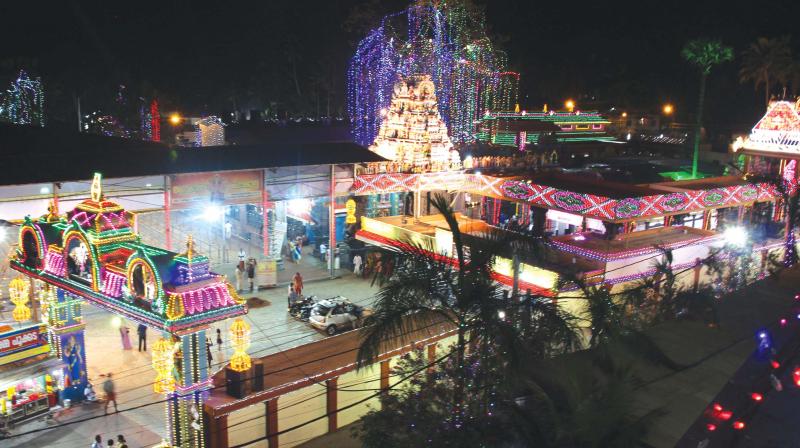Over to Women's Sabari

THIRUVANANTHAPURAM: Attukal Devi Temple, decked up in lights and reverberating with hymns sung to the accompaniment traditional instruments, presented the perfect setting on the eve of the largest congregation of women, come to beseech the Devi’s bountiful blessings for themselves and families. Lakhs are expected (Guinness recorded 2.5 million in 2009) to offer prayers to goddess Bhagavathi by cooking a sweet dish of rice and jiggery at hearths spread out from temple premises on a 7-km radius. While Kali temples across Kerala celebrate pongala festivals between June and April, Attukal pongala turns out to be the mother of all, as the same set of devotees, who offer pongalas at local shrines, turn up here as well. Apart from thousands of private vehicles, KSRTC mobilises 400 buses. Railways mobilizes special trains.
Often the number of devotees is disputed by rationalists, who cite that Kerala has but a female population of 17.3 million, including non-Hindus and minors. However, the fact is numbers of female devotees grow every year to soak in the billion-watt frenzy. Pongala has often been romanticised as women’s day’s escape from patriarchy as it is mostly a female gathering. On pongala day, women leave domestic chores to their men, who also find time drop and pick up them after pongala. The glitzy pongala has increased over time as devotees, including celebrities and foreigners, throng with offerings on the ninth day of the festival. The festival finale kicks off with the cleansing ceremony, after which the temple hearth is lit, passing on the fire across hearths. It is passed from hearth to hearth until it reaches the last devotee.
Men, barring support staff and volunteers, are cut off from half a kilometere near temple premises hours before the festival. Towards the evening holy water from temple is passed on till the last hearth. Copters shower flowers from above. Needless to say, that traffic jam continues for hours before and after pongala. It’s a deadline for civic work too The post-pongala cleanup drive by Thiruvananthapuram Corporation has been iconic as officials manage to wash city roads after removing debris in less than three hours. Annually over 2,000 cleaning staff and various volunteer groups remove nearly 100 truckloads of ash, bricks and organic waste left behind by millions of devotees. Fire-engines and corporation tankers clean up streets. Pongala also ensures the festival sets a deadline for civic work in 31 core wards of the 100-ward Corporation. Swift release of funds helps in road work and streetlights are mended. Water supply and sewerage systems are spruced up to cater to the millions of devotees. This time around 3,100 police personnel under 400 sub inspectors keep vigil. The district administration is on edge, given that mammoth crowds are there out in the sun.
‘Tamil-origin’ pongala means offering to sun
Ever wondered where the word ‘pongala’ came from? Sabdataravali defines it as ‘an offering to sun’, says historian M. G. Sasibhooshan. “The pongala kiln is set outside because it is an offering to the sun. The usage is the same as mattu pongal and makara pongal,” he says. The word is likely to have come from the Tamil word pongal, according to K.S. Ravikumar, head, Malayalam department, Sri Sankaracharya Sanskrit University. “I believe the root of pongala must be from the Tamil word pongal, which means boiled rice,” he says. The word pongala is used only in south Kerala. Prof. Sasibhooshan says that people in Thrissur use the term kalam karikkuka and those in other parts of the state say ‘palu kachuka’. “Koonampaikkulam temple has a ritual called ‘chandrapongala’ in which the offering is made to the moon. It is a recent ritual. It should not be called a pongala, as the word itself means offering to sun,” says the historian.

